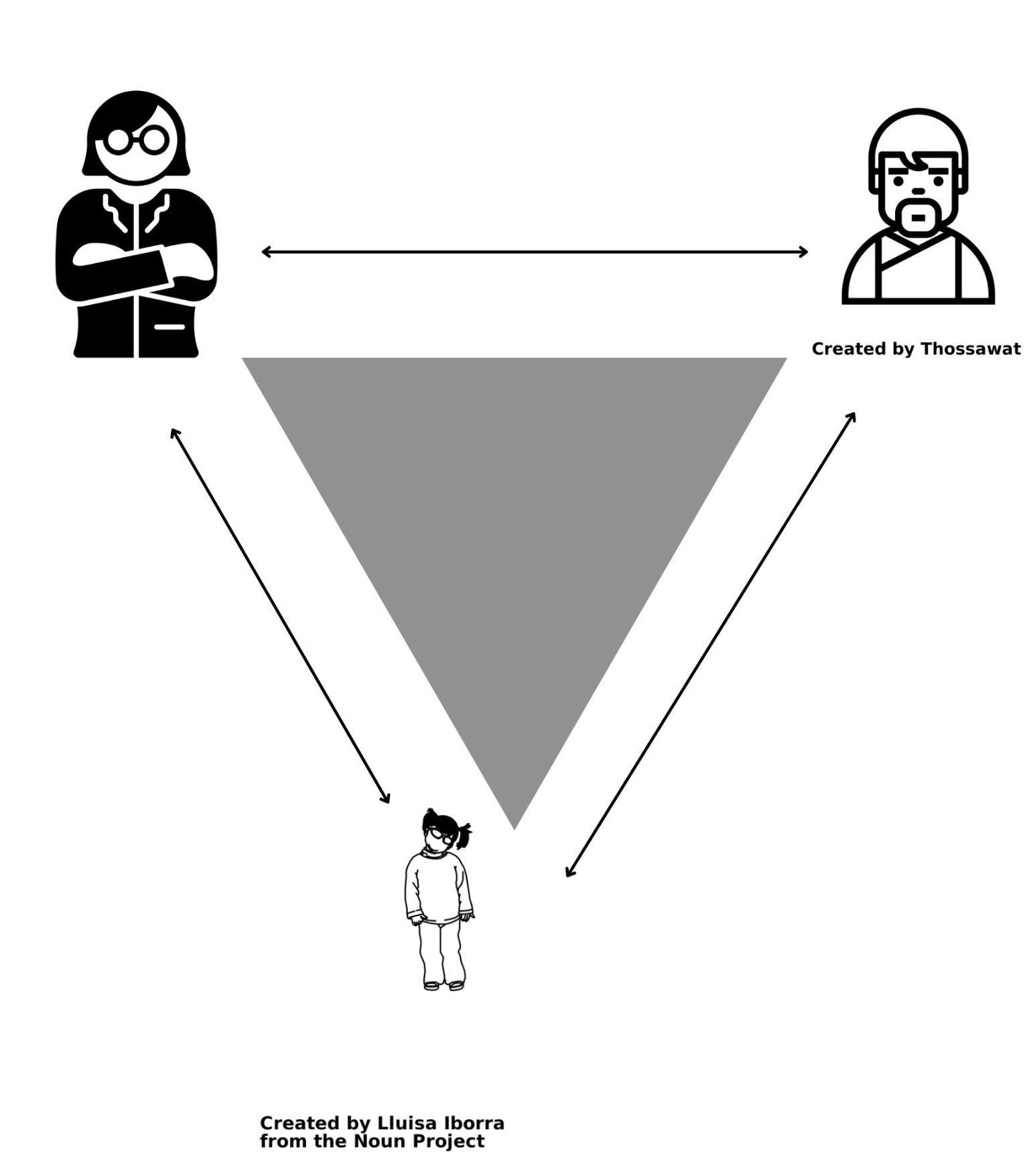Family Systems Theory
Dr. Murray Bowen’s Family Systems Theory claims that the family is understood best by conceptualizing it as a complex, dynamic, and changing collection of parts, subsystems and family members. Much like a mechanic would interface with the computer system of a broken down car to diagnose which systems are broken (transmission, electrical, fuel, etc.) to repair it, a therapist or researcher would interact with family members to diagnose how and where the systems of the family are working and where they are in need of repair or intervention.
The Family Systems Theory is represented by triangles, or a three-person relationship system. It is considered the building block or “molecule” of larger emotional systems because a triangle is the smallest stable relationship system. A two-person system is unstable because it tolerates little tension before involving a third person (Lang).

A triangle can contain much more tension without involving another person because the tension can shift around three relationships. If the tension is too high for one triangle to contain, it spreads to a series of “interlocking” triangles. Spreading the tension can stabilize a system, but does not resolve tension. Bowen Family Systems Theory asks us to consider eight key interlocking triangles when understanding the family:
Table 2.2: Bowen’s Family Systems Theory
| Name | Description |
| Emotional triangles | An emotional triangle represents the emotionally driven relationship process that is present in all families. It describes the emotional dynamics between any two or all members of the triangle. |
| Differentiation of self | We are emotionally connected to our families, and those emotions impact our family dynamics. Differentiation of self indicates that we are autonomous in our own emotional functioning. |
| Nuclear family | The nuclear family provides a symbolic image of the family at the nucleus, the center, of the emotional system. In times of marital conflict, dysfunction of a spouse, emotional distancing, or conflict over child rearing, that nucleus is threatened. |
| Family projective process | The child is the focus of this key tenet of Bowen’s Family Systems Theory. When there is an intense focus on the child, they may not be given the tools or space to grow, think, feel, and act for themself. |
| Multi-generational transmission process | Multi-generational transmission process refers to how generations of families teach or role model emotional intensity. This key tenet asks us to consider how each generation offers greater or lesser levels of differentiation of emotional intensity within the nuclear family. |
| Emotional cut-off | Emotional cut-off describes our need for personal space and distance from emotional intensity. |
| Sibling position | Personality characteristics fit within the sibling position in which a person grows up. |
| Societal emotional process | Our emotions influence our cognitive systems and behaviors which, in turn, impact our interactions with others. The societal emotional process describes that relationship within society and amongst each other. |
Other key concepts within the Family Systems Theory include:
- boundaries (e.g.Who is a member of the system?),
- equilibrium (e.g., during stressors or crises, the system attempts to return to its original state wherein members are functional and comfortable), and
- bidirectional (e.g., a change with one member will impact at least one other member, and hence impact the whole system).
Case Study B
 For example, one 2008 study collected data from parents and their children who immigrated to the United States from Vietnam and Cambodia to assess the role of family processes in disagreements over cultural values. The researchers found that cultural clashes were linked to parent-child conflict, which in turn was linked to reduced parent-child bonding, both of which increase adolescent behavioral problems (Lang).
For example, one 2008 study collected data from parents and their children who immigrated to the United States from Vietnam and Cambodia to assess the role of family processes in disagreements over cultural values. The researchers found that cultural clashes were linked to parent-child conflict, which in turn was linked to reduced parent-child bonding, both of which increase adolescent behavioral problems (Lang).This theory also assumes that families can examine their own processes and set deliberate goals. Change can occur when a family system acknowledges that a particular family pattern causes family stressors and identifies new processes that support the family’s goals.
Pause to Reflect
Discuss the following questions.
- What is the main role you have in your family system?
- Which cultural values do you share with your family system?
- Which cultural values do you separate yourself from within your family system?
- How do family roles, patterns of interaction between family members, and shared or unshared cultural values impact a family’s relationships with schools or communities?
Media Attributions
- Family Systems Theory
- Mother and Daughter

